Main functions
WinDENDRO annual ring image analysis system is a multi-platform image analysis system that matches the scanner and specializes in measuring tree annual rings on disc-shaped wood cross-sections or columnar growth cone samples.
Large wood samples can be imaged multiple times in different parts; special tree core locators are used to place columnar samples; two methods of automatic annual ring measurement are suitable for different tree types; artificially assisted image recognition correction and missing pixel addition functions; Wood density measurement (density version) can be performed using X-ray film scanning of wood sheets.In addition, WinDENDRO can automatically set the tangent line between the crack and the annual ring angle to ensure the accuracy of measurement; in addition, additional XLSTEM can perform standard growth analysis of plants, such as the average radius, diameter, and overall cross-sectional area of stems; tree height, volume,Tree age, etc.The analyzed annual ring image can simultaneously display the following parameters: annual ring width, early material/summer material width, annual ring maximum/minimum density/average density, early material/summer material average density (advanced density version), etc.
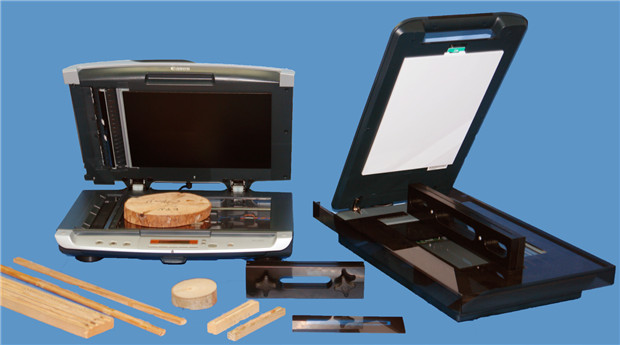
Measurement parameters
Basic measurement parameters of annual rings:Annual ring count, annual ring width, early/late material width, annual ring angle (radian), etc.
Annual ring density measurement parameters:The average density of annual rings, average density of early materials, average density of late materials, maximum density of late materials, and maximum density of early materials.
Tree disc measurement parameters:Disk area, circumference, average diameter, shape factor, pore area, annual ring technology, etc.
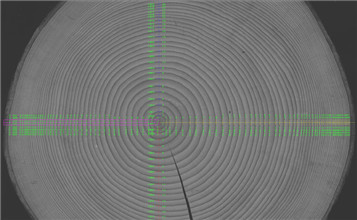
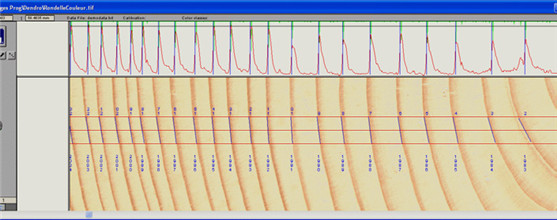
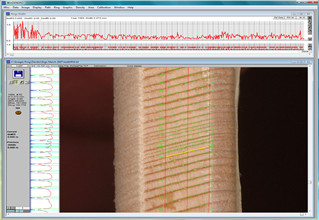

Application areas
Widely used in botany, plant physiology, forestry, arborology, forest ecology and other fields.
Main technical parameters
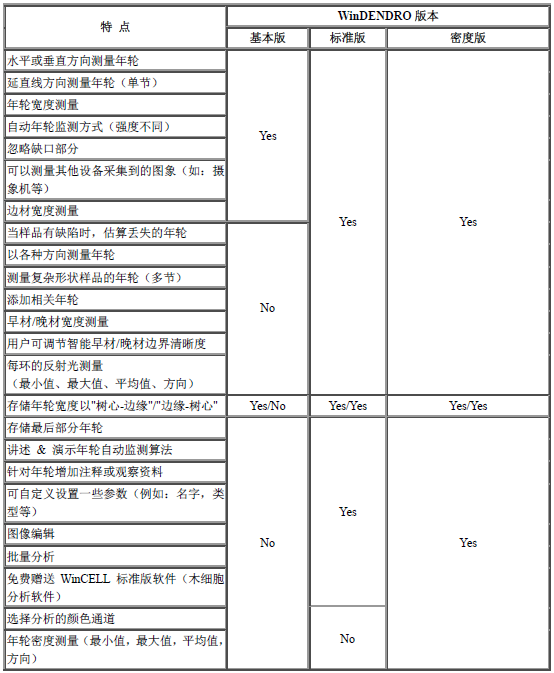
WinDENDRO Itrax Software
Includes all functions of the density version software, and adds chemical substance analysis function.Note: Cox Systems' itrax scanner must be used.
Purchase Guide:
The system consists of the following two parts:
Image capturing system: standard annual ring sample scanning equipment, growth cone locator, etc. debugged by the manufacturer.
· STD4800: Scan area 22×30 cm, projection area 20×25 cm, resolution 4800 DPI, minimum resolution of 0.005 mm
· LA2400: Extra large scanning area 31×44 cm, projection area 31×42 cm, resolution 2400 DPI, minimum resolution of 0.011 mm
Annual ring analysis software: Basic version / Standard version / Itrax version density version WinDENDRO analysis software.
Origin: Canada Regent
References
Original data source: Google Scholar
Wrońska-Wałach D, Sobucki M, Buchwał A, Gorczyca E, Korpak J, et al. (2016) Quantitative analysis of ring growth in spruce roots and its application towards a more precise dating. Dendrochronologia 38: 61-71.
Wood LJ, Smith DJ, Hartley ID (2016) Predicting softwood quality attributes from climate data in interior British Columbia, Canada. Forest Ecology and Management 361: 81-89.
Tumajer J, Treml V (2016) Response of floodplain pedunculate oak (Quercus robur L.) tree-ring width and vessel anatomy to climatic trends and extreme hydroclimatic events. Forest Ecology and Management 379: 185-194.
Stretch V, Gedalof Ze, Cockburn J, Pisaric MFJ (2016) Sensitivity of reconstructed fire histories to detect criteria in mixed-severity landscapes. Forest Ecology and Management 379: 61-69.
Slack AW, Zeibig-Kichas NE, Kane JM, Varner JM (2016) Contingent resistance in longleaf pine (Pinus palustris) growth and defense 10 years following smokerdering fires. Forest Ecology and Management 364: 130-138.
Simon P, Lena M (2016) Radial growth response of horse chestnut (Aesculus hippocastanum L.) trees to climate in Ljubljana, Slovenia. Urban Forestry & Urban Greening 18: 110-116.
Scharnweber T, Hevia A, Buras A, van der Maaten E, Wilmking M (2016) Common trends in elements? Within- and between-tree variations of wood-chemistry measured by X-ray fluorescence — A dendrochemical study. Science of The TotalEnvironment 566–567: 1245-1253.
Renard SM, Gauthier S, Fenton NJ, Lafleur B, Bergeron Y (2016) Prescribed burning after clearcut limits paludification in black spruce boreal forest. Forest Ecology and Management 359: 147-155.
Qian S, Yang Y, Tang CQ, Momohara A, Yi S, et al. (2016) Effective conservation measures are needed for wild Cathaya argyrophylla populations in China: Insights from the population structure and regeneration characteristics. Forest Ecology and Management 361: 358-367.
Pritzkow C, Wazny T, Heußner KU, Słowiński M, Bieber A, et al. (2016) Minimum winter temperature reconstruction from average earlywood vessel area of European oak (Quercus robur) in N-Poland. Palaeogeography, Palaeoclimatology, Palaeoecology 449: 520-530.
Parobeková Z, Sedmáková D, Kucbel S, Pittner J, Jaloviar P, et al. (2016) Influence of disorders and climate on high-mountain Norway spruce forests in the Low Tatra Mts., Slovakia. Forest Ecology and Management 380: 128-138.
Papadopoulos A (2016) tree-ring patterns and climate response of Mediterranean FIR population sin central Greece. den ROC HR no logia 40: 17-25.
Omari K, MacLean DA, Lavigne MB, Kershaw Jr JA, Adams GW (2016) Effect of local stand structure on leaf area, growth, and growth efficiency following thinning of white spruce. Forest Ecology and Management 368: 55-62.
Marchand W, DesRochers A (2016) Temporal variability of aging error and its potential effects on black spruce site productivity estimations. Forest Ecology and Management 369: 47-58.
Liang H, Lyu L, Wahab M (2016) A 382-year reconstruction of August mean minimum temperature from tree-ring maximum latewood density on the southeastern Tibetan Plateau, China. Dendrochronologia 37: 1-8.
Lee EH, Beedlow PA, Waschmann RS, Tingey DT, Wickham C, et al. (2016) Douglas-fir displays a range of growth responses to temperature, water, and Swiss needle cast in western Oregon, USA. Agricultural and Forest Meteorology 221: 176-188.
Larson ER, Rawling Iii JE (2016) Developing new sources of proxy climate data from historical structures in the Lake Michigan-Huron Basin. Journal of Great Lakes Research 42: 328-335.
Holeksa J, Zielonka T, Żywiec M, Fleischer P (2016) Identifying the disorder history over a large area of larch–spruce mountain forest in Central Europe. Forest Ecology and Management 361: 318-327.
Haines HA, Olley JM, Kemp J, English NB (2016) Progress in Australian dendroclimatology: Identifying growth limiting factors in four climate zones. Science of The Total Environment 572: 412-421.
Giroud G, Bégin J, Defo M, Ung C-H (2016) Ecogeographic variation in black spruce wood properties across Quebec’s boreal forest. Forest Ecology and Management 378: 131-143.
Dyderski MK, Czapiewska N, Zajdler M, Tyborski J, Jagodziński AM (2016) Functional diversity, succession, and human-mediated disorders in raised bog vegetation. Science of The Total Environment 562: 648-657.
Ashiq MW, Anand M (2016) Spatial and temporal variability in dendroclimatic growth response of red pine (Pinus resinosa Ait.) to climate in northern Ontario, Canada. Forest Ecology and Management 372: 109-119.
Amos-Binks LJ, MacLean DA (2016) The influence of natural disorders on developmental patterns in Acadian mixed wood forests from 1946 to 2008. Dendrochronologia 37: 9-16.
Woolley TJ, Harmon ME, O’Connell KB (2015) Inter-annual variability and spatial coherence of net primary productivity across a western Oregon Cascades landscape. Forest Ecology and Management 335: 60-70.
van der Sleen P, Groenendijk P, Zuidema PA (2015) Tree-ring δ18O in African mahogany (Entanandrophragma utile) records regional precipitation and can be used for climate reconstructions. Global and Planetary Change 127: 58-66.
Toïgo M, Vallet P, Tuilleras V, Leburgeois F, Rozenberg P, et al. (2015) Species mixture increases the effect of drought on tree ring density, but not on ring width, in Quercus petraea–Pinus sylvestris stands. Forest Ecology andManagement 345: 73-82.
Sillett SC, Van Pelt R, Kramer RD, Carroll AL, Koch GW (2015) Biomass and growth potential of Eucalyptus regnans up to 100 m tall. Forest Ecology and Management 348: 78-91.
Sauchyn D, Vanstone J, St. Jacques J-M, Sauchyn R (2015) Dendrohydrology in Canada’s western interior and applications to water resource management. Journal of Hydrology 529, Part 2: 548-558.
Sanz-Ros AV, Müller MM, San Martín R, Diez JJ (2015) Fungal endophytic communities on twigs of fast and slow growing Scots pine (Pinus sylvestris L.) in northern Spain. Fungal Biology 119: 870-883.
Paredes-Villanueva K, López L, Brookhouse M, Cerrillo RMN (2015) Rainfall and temperature variation in Bolivia derived from the tree-ring width of Amburana celebration (Fr. Allem.) A.C. Smith. Dendrochronologia 35: 80-86.
Ouimet R, Moore J-D (2015) Effects of fertilization and liming on tree growth, vitamin and nutrient status in boreal balsam fir stands. Forest Ecology and Management 345: 39-49.
Merlin M, Perot T, Perret S, Korboulewsky N, Vallet P (2015) Effects of stand composition and tree size on resistance and resilience to drought in sessile oak and Scots pine. Forest Ecology and Management 339: 22-33.
Mayor JR, Mack MC, Schuur EAG (2015) Decoupled stoichiometric, isotopic, and fungal responses of an ectomycorrhizal black spruce forest to nitrogen and phosphorus additions. Soil Biology and Biochemistry 88: 247-256.
Martinez-Meier A, Fernández ME, Dalla-Salda G, Gyenge J, Licata J, et al. (2015) Ecophysiological basis of wood formation in ponderosa pine: Linking water flux patterns with wood microdensity variables. Forest Ecology and Management 346: 31-40.
Marcoux HM, Daniels LD, Gergel SE, Da Silva E, Gedalof Ze, et al. (2015) Differentiating mixed- and high-severity fire regimes in mixed-conifer forests of the Canadian Cordillera. Forest Ecology and Management 341: 45-58.